This is a preprint.
Molecular glues that inhibit deubiquitylase activity and inflammatory signalling
- PMID: 39282282
- PMCID: PMC11398498
- DOI: 10.1101/2024.09.07.611787
Molecular glues that inhibit deubiquitylase activity and inflammatory signalling
Update in
-
Molecular glues that inhibit deubiquitylase activity and inflammatory signaling.Nat Struct Mol Biol. 2025 Sep;32(9):1812-1824. doi: 10.1038/s41594-025-01517-5. Epub 2025 Mar 17. Nat Struct Mol Biol. 2025. PMID: 40097626 Free PMC article.
Abstract
Deubiquitylases (DUBs) are crucial in cell signalling and are often regulated by interactions within protein complexes. The BRCC36 isopeptidase complex (BRISC) regulates inflammatory signalling by cleaving K63-linked polyubiquitin chains on Type I interferon receptors (IFNAR1). As a Zn2+-dependent JAMM/MPN DUB, BRCC36 is challenging to target with selective inhibitors. We discovered first-in-class inhibitors, termed BRISC molecular glues (BLUEs), which stabilise a 16-subunit BRISC dimer in an autoinhibited conformation, blocking active sites and interactions with the targeting subunit SHMT2. This unique mode of action results in selective inhibition of BRISC over related complexes with the same catalytic subunit, splice variants and other JAMM/MPN DUBs. BLUE treatment reduced interferon-stimulated gene expression in cells containing wild type BRISC, and this effect was absent when using structure-guided, inhibitor-resistant BRISC mutants. Additionally, BLUEs increase IFNAR1 ubiquitylation and decrease IFNAR1 surface levels, offering a potential new strategy to mitigate Type I interferon-mediated diseases. Our approach also provides a template for designing selective inhibitors of large protein complexes by promoting, rather than blocking, protein-protein interactions.
Conflict of interest statement
Competing interests E.Z., R.G., J.M.S., and F.S. are named co-inventors in a patent application to use BRISC inhibitors as therapeutics (WO2024115713A1). J.M.S. owns equity in Alliance Discovery, Inc and the Barer Institute, Inc, and consults for Syndeavor Therapeutics, Inc.
Figures
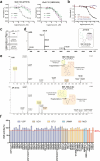
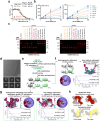

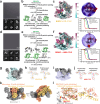
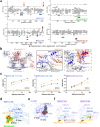
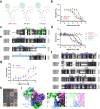
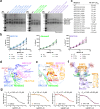
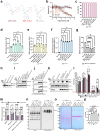







References
-
- Hershko A. & Ciechanover A. The ubiquitin system. Annu. Rev. Biochem 67, 425–79 (1998). - PubMed
-
- Komander D., Clague M. J. & Urbé S. Breaking the chains: Structure and function of the deubiquitinases. Nat Rev Mol Cell Biol 10, 550–563 (2009). - PubMed
-
- Komander D. & Rape M. The Ubiquitin Code. Annu Rev Biochem 81, 203–229 (2012). - PubMed
-
- Walden M., Masandi S. K., Pawłowski K. & Zeqiraj E. Pseudo-DUBs as allosteric activators and molecular scaffolds of protein complexes. Biochem Soc Trans 46, (2018). - PubMed
-
- Clague M. J., Urbé S. & Komander D. Breaking the chains: deubiquitylating enzyme specificity begets function. Nat Rev Mol Cell Biol 20, 338–352 (2019). - PubMed
Publication types
Grants and funding
LinkOut - more resources
Full Text Sources
Molecular Biology Databases
Research Materials
